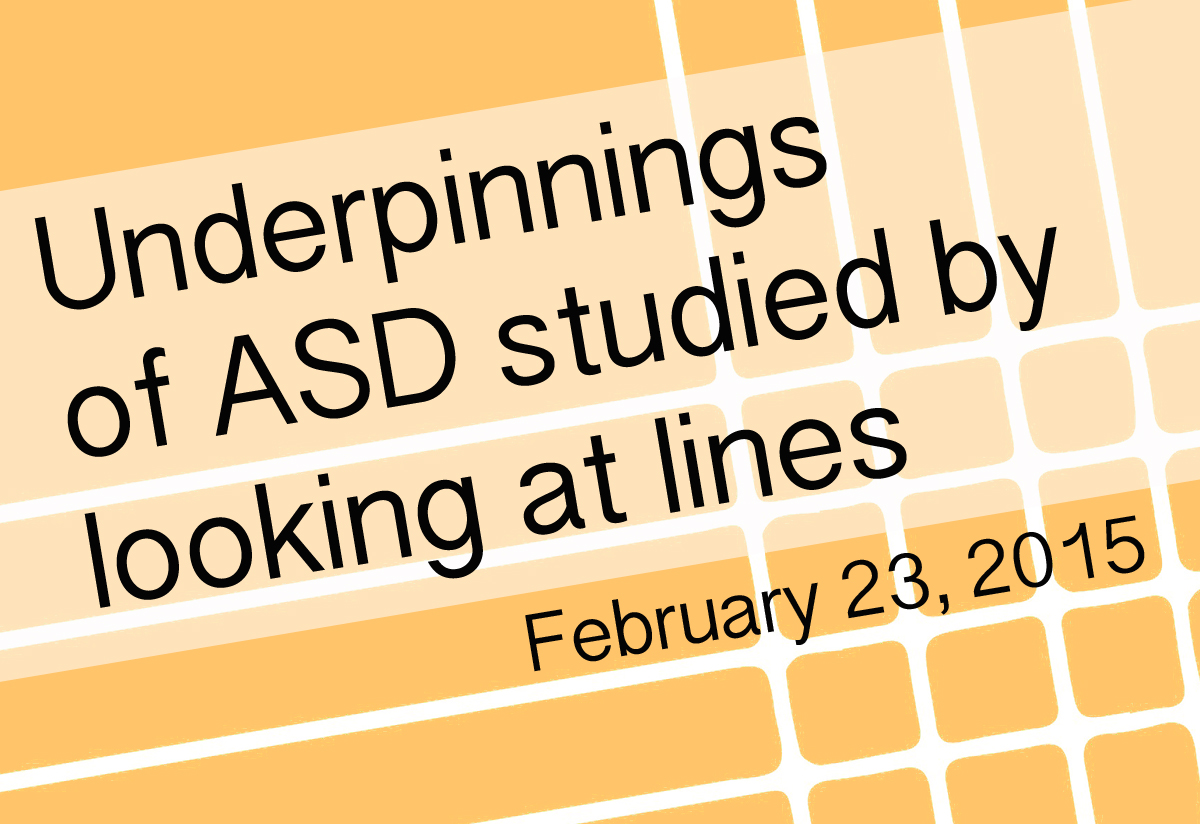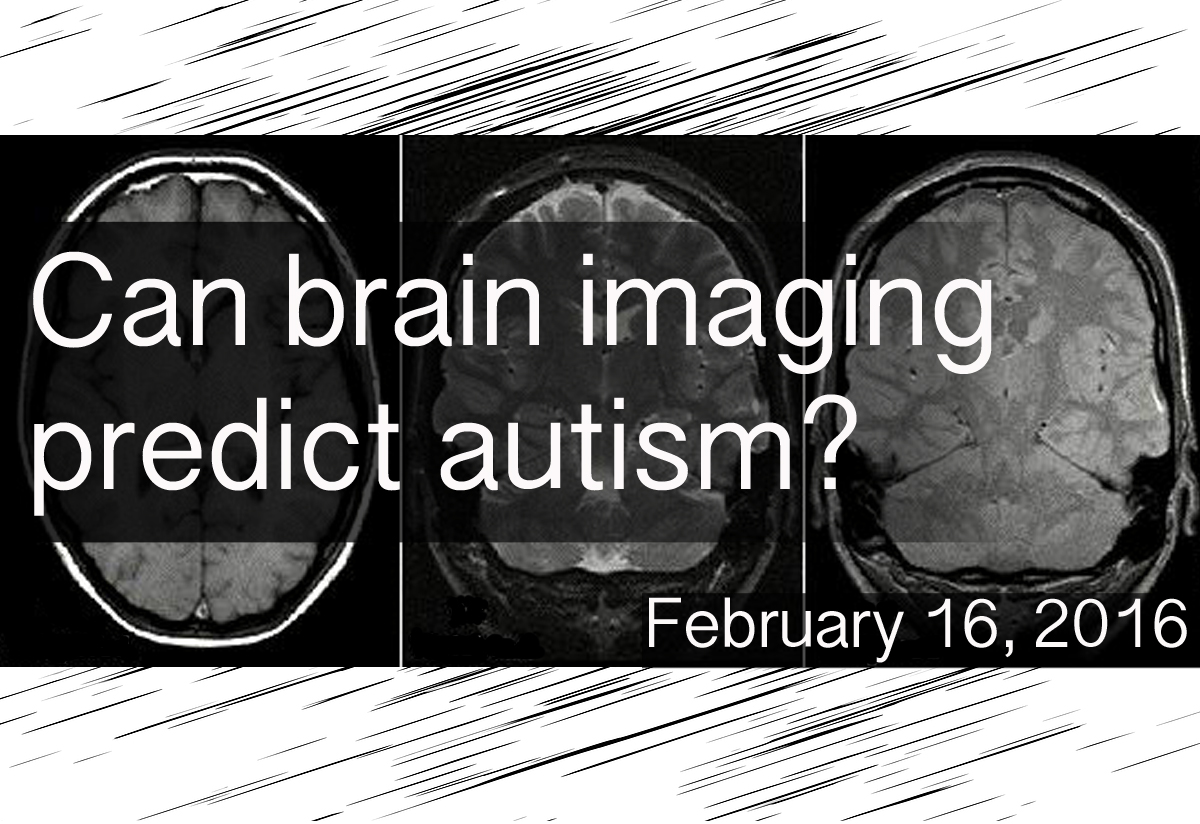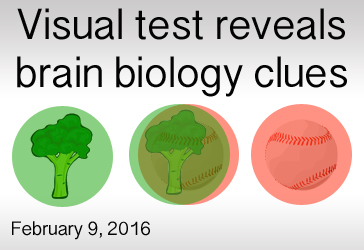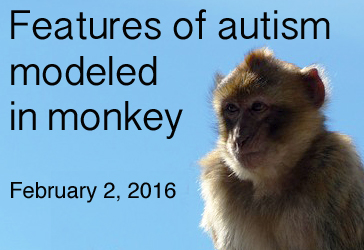Archives
February, 2016
Select a different month in the archive
Different Visual Processing Patterns Observed in Autism
By Chelsea E. Toledo, M.A. on February 23, 2016

Background: On a visual plane, the oblique axis runs at a 45 degree angle relative to the horizontal and vertical axes. For typically developing individuals, it is easier to perceive patterns along the vertical and horizontal axes than those along the oblique axis—a phenomenon known as the “oblique effect.”
What’s New: On January 21, 2016, the journal Frontiers in Neuroscience published a study exploring how people with autism spectrum disorder (ASD) differed from their typically developing peers on visual processing tasks. The researchers administered the same task to 64 boys between the ages of seven and fifteen, 26 of whom had ASD. Each participant was tasked with looking at a striped object tilted at various angles, and to determine its position relative to the vertical and oblique axis. The group with typical development perceived the relationship of objects to the vertical axis much better than the relationship of objects to the oblique axis – a pattern not observed in the group with ASD.
Why it’s important: This study suggests that children with ASD have impaired visual processing along a vertical axis, but not along an oblique axis. Future studies could pinpoint the neurological basis of this difference, revealing clues about the underpinnings of ASD.
Help me understand :
| Source(s) : |
| Tweet |
Brain Imaging Far from ASD Diagnosis, But Getting There
By Shana R. Spindler, Ph.D. on February 16, 2016

Background: A major goal in autism research is to identify measurable indicators, known as biomarkers, for Autism Spectrum Disorder (ASD) diagnosis. To date, researchers have struggled to find a universal commonality among the brains of individuals with autism. Magnetic Resonance Imaging (MRI), a type of scan that uses magnetic fields and radio waves to create detailed images of organ systems, is a popular technique to study brain structures in a living person and holds much promise for finding an ASD biomarker.
What’s new: At the 37th International Conference of the Institute of Electrical and Electronics Engineers, researchers reported on how well structural MRI predicts an autism diagnosis. In a large study using a well-established set of MRI brain scans from 15 research centers across the United States, researchers performed several experiments, showing that:
- The accuracy of autism classification by MRI got better with increased autism severity
- MRI detected possible anatomical features of autism with higher sensitivity when the individual was less than ten years of age or more than 30 years of age
- The frontal and temporal regions of the brain were important for autism classification by MRI
- Due to the heterogeneous nature of ASD, studies using a small number of participants may inflate the actual predictive power of MRI
Why it’s important: This is the first study to find that autism severity, according to social and communicative behaviors, correlates with the predictive power of MRI. The results suggest that individual behavioral information may help augment MRI findings. The study also highlights the importance of social and language regions of the brain, key age ranges for MRI effectiveness, and the requirement for large numbers of participants in brain imaging studies for autism.
Help me understand :
| Source(s) : |
| Tweet |
Visual Study Links Neurotransmitter to Autism
By Chelsea E. Toledo, M.A. on February 9, 2016

Background: Neurotransmitters are chemicals that send messages within the brain, contributing to a range of every day functions. There are seven primary neurotransmitters in humans: acetylcholine, dopamine, serotonin, norepinephrine, epinephrine, gamma-amino butyric acid (GABA), and histamine. GABA is the major inhibitory neurotransmitter in both the brain and spinal cord – helping to suppress excess stimuli. Previous studies suggest that Autism Spectrum Disorder (ASD) may stem from an imbalance between excitatory and inhibitory signals in the brain.
What’s New: On January 11, 2016, the journal Current Biology published a study exploring the relationship between GABA and the behavioral symptoms of people with ASD. The researchers administered a visual test to 20 individuals with autism and 21 with typical development, showing images in both eyes and testing how well the participants suppressed one image to focus on another—typically, the brain alternates focus between each eye and the singular mixed image. The researchers found that the participants with ASD were significantly slower to switch their focus between the images. The team then used a specialized brain imaging technique on the participants and found a correlation between the visual task performance and GABA activity in the brain.
Why it’s important: The ability to switch focus between two visual cues is thought to rely on the brain’s ability to control the inhibition and excitation of neurons, making this a good model to study inhibitory signals in the brain. Future studies could delve deeper into this relationship, determining the precise role of GABA inactivity in ASD.
Help me understand :
| Source(s) : |
| Tweet |
Macaque Monkey Model Exhibits Autism-Like Behaviors
By Anjali A. Sarkar, Ph.D. on February 2, 2016

Background: Mutations in the MECP2 gene cause Rett syndrome, a brain disorder with autistic features that affects girls almost exclusively. However, extra copies of the MeCP2 gene results in core symptoms of autism spectrum disorder mostly in boys. Although mouse models of Rett syndrome exist, investigations on the role of additional MeCP2 copies using the mouse model have proven to be difficult as mice with excess MeCP2 protein fail to develop symptoms reminiscent of autism.
What's new: On January 25, 2016, the journal Nature published a study on the effects of excess MeCP2 gene products in the monkey brain. Neuroscientists at the Chinese Academy of Sciences in Shanghai generated genetically engineered macaque monkeys that expressed multiple copies of the human MeCP2 gene, specifically in the neural tissue of the brain. When compared to a control group, the monkeys with extra MeCP2 showed the signature behavioral traits of autism: increased frequency of repetitive circular locomotion, increase anxiety, reduced social interaction, and relatively weak signs of cognitive impairment.
Why it’s important: This study introduces a new macaque monkey model mimicking human MECP2 duplication syndrome that includes core features of autism. Given the close lineage, monkeys may offer an improved model for autism spectrum disorders by opening-up novel therapeutic possibilities.
Help me understand :
| Source(s) : |
| Tweet |

